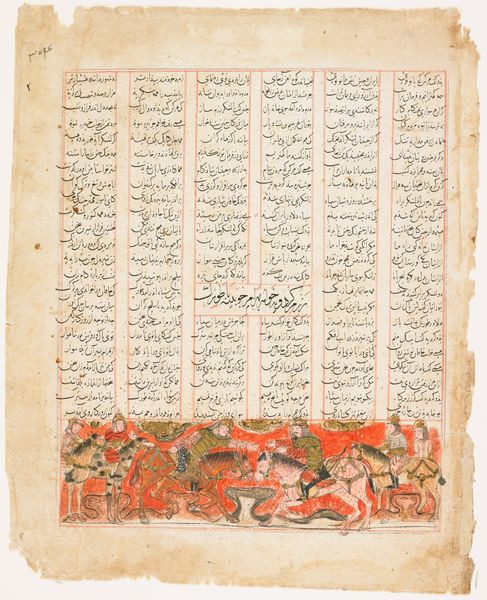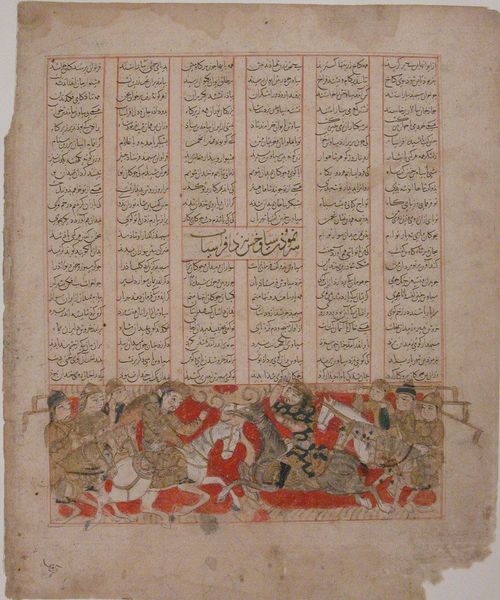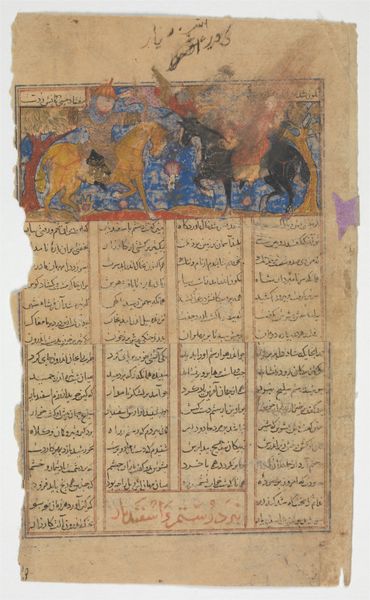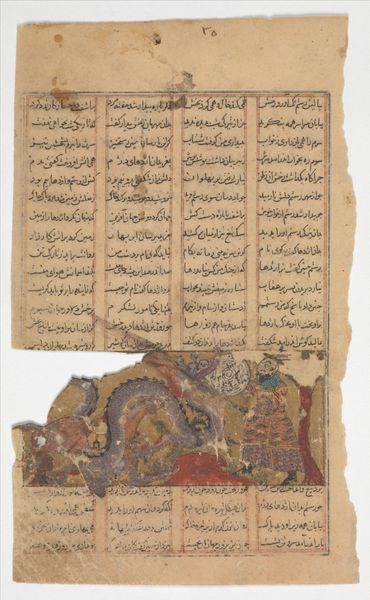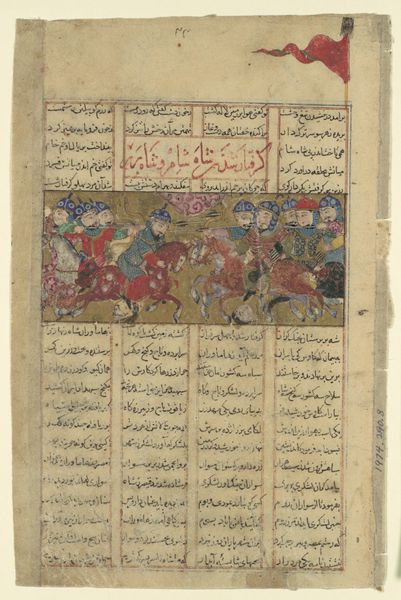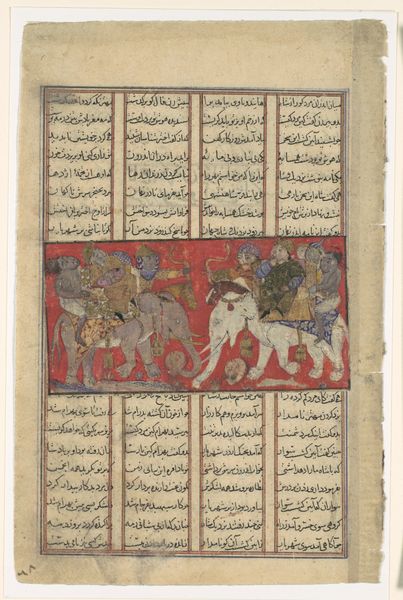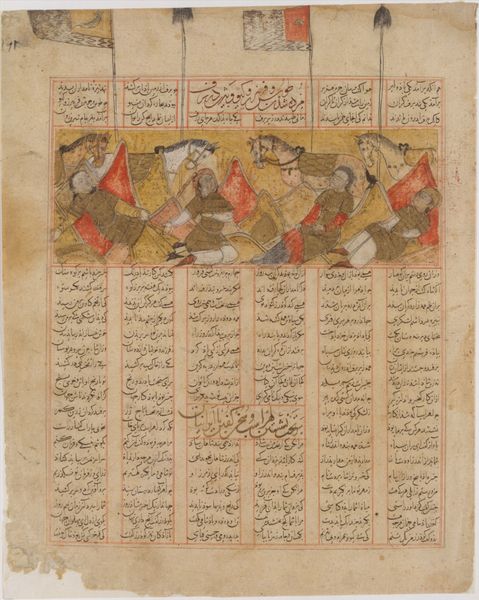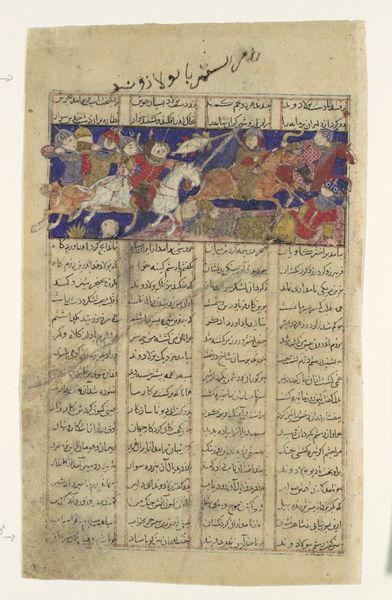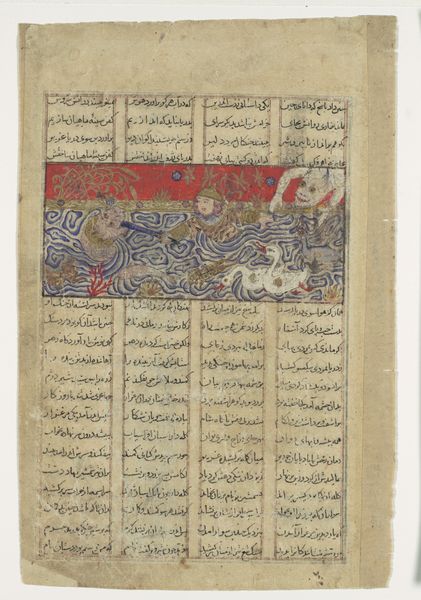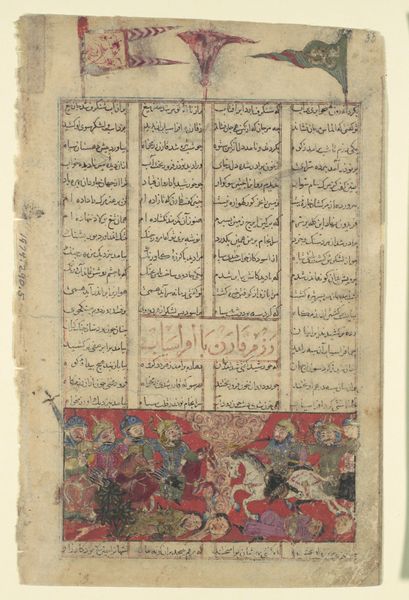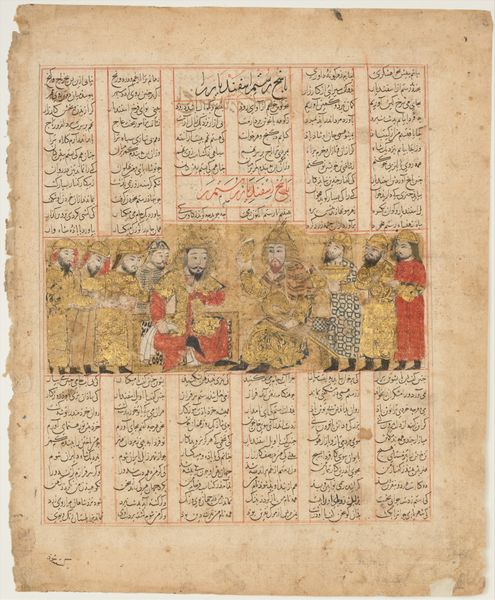
"Bizhan Slaughters the Wild Boars of Irman", Folio from a Shahnama (Book of Kings) 1316 - 1366
0:00
0:00
mixed-media, painting, watercolor
#
mixed-media
#
medieval
#
narrative-art
#
painting
#
watercolor
#
coloured pencil
#
horse
#
islamic-art
#
mixed media
#
miniature
#
watercolor
Dimensions: Painting: H. 3 1/2 in. (8.9 cm) W. 9 7/16 in. (24 cm) Page: H. 14 3/8 in. (36.5 cm) W. 11 15/16 in. (30.3 cm) Mat: H. 22 in. (55.9 cm) W. 16 in. (40.6 cm)
Copyright: Public Domain
Curator: Let’s have a look at this striking page from a Shahnama, or Book of Kings. Titled “Bizhan Slaughters the Wild Boars of Irman,” it dates back to between 1316 and 1366. The epic was created by Abu’l Qasim Firdausi, but this painting employs watercolor and mixed media techniques, housed at the Metropolitan Museum. Editor: A primal scene! That red background throws the muscular grey boars into high relief, accentuating the frenzy. And that slash of gold behind the hero; is it meant to signify some kind of divine sanction? It gives the whole tableau a dynamic tension, almost brutal in its energy. Curator: Precisely! This Shahnama depicts stories, legendary histories of Persia. This specific scene captures Bizhan’s courageous feat of slaughtering wild boars. Symbolically, wild boars often represent untamed forces, chaos, things that threaten social order. So, Bizhan's act is not just a show of strength but also a symbol of order prevailing over the wild. Editor: You can see that echoed formally in the tightly controlled composition. Notice the limited color palette – the earthy reds and grays contrasting with the blues and yellows on the heroic figure? This highlights a clear visual hierarchy, which keeps the eye centered on the hero despite the surrounding chaos. Curator: That makes sense! The colors support that moral and hierarchical structure typical of that medieval Islamic art, emphasizing the qualities and roles ascribed to specific figures in society. These works aimed to provide a sort of guide to virtues. Editor: Although, I'm left wondering, does all this attention on the hero downplay the boars as something more than just beasts to be slain? I mean, there's almost something magnificent, in the pure volume of grey bodies against the page, don't you think? Curator: They certainly command presence on the page. Yet remember the symbolic weight assigned to them at that time, with their associations with destruction. The heroic narrative here promotes that reading rather than offering an understanding beyond such constructs. Editor: I still sense a glimmer of the raw and magnificent—untamed, even in the portrayal of what is deemed untameable! It pushes the narrative in subtle but noticeable ways. Curator: It shows how such visual emblems persist, even with centuries separating our views from the original intentions. They transform! Editor: Indeed! Even formal elements take on new emotional resonance over time, reflecting diverse encounters with symbols, their many historical refractions and psychological reverberations.
Comments
No comments
Be the first to comment and join the conversation on the ultimate creative platform.
